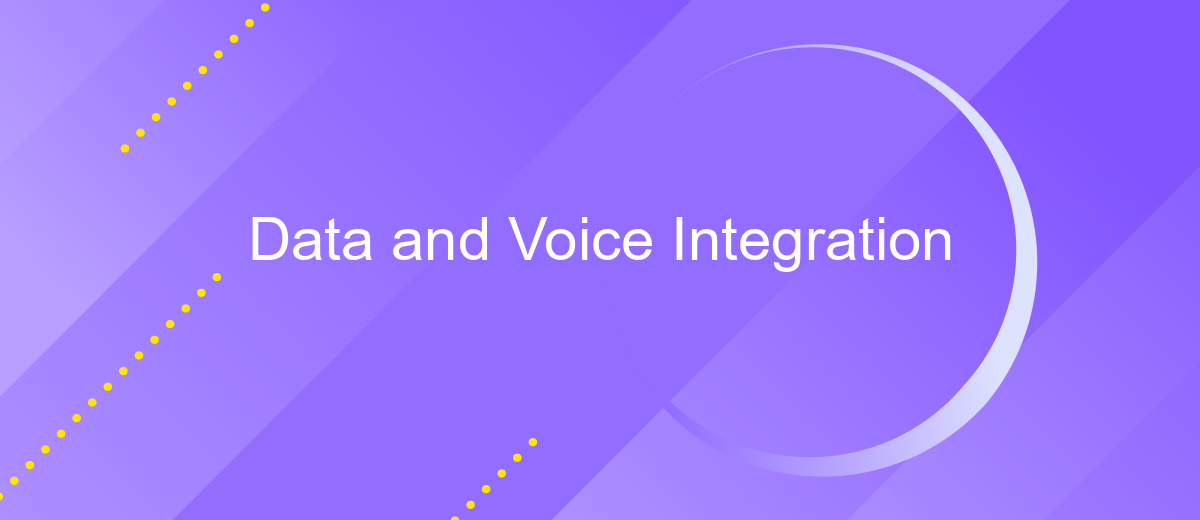Data and Voice Integration
In today's interconnected world, the integration of data and voice communication is crucial for enhancing business efficiency and collaboration. By seamlessly merging these two forms of communication, organizations can streamline operations, reduce costs, and improve overall productivity. This article explores the key benefits and technological advancements driving the convergence of data and voice systems in modern enterprises.
Introduction
Data and Voice Integration has become a crucial aspect of modern communication systems, enabling businesses to streamline their operations and enhance customer interactions. By merging data and voice channels, organizations can achieve higher efficiency, improved service quality, and better decision-making capabilities.
- Enhanced customer service through unified communication channels
- Increased operational efficiency by reducing manual processes
- Improved data accuracy and real-time analytics
- Cost savings by leveraging existing infrastructure
One of the key players in facilitating seamless data and voice integration is ApiX-Drive. This service offers comprehensive tools to automate and synchronize various communication channels, ensuring that businesses can effortlessly manage their data and voice interactions. With ApiX-Drive, companies can easily set up integrations, monitor performance, and scale their operations without extensive technical expertise.
Benefits and Advantages

Integrating data and voice systems offers significant advantages, enhancing both efficiency and communication within organizations. By consolidating these functions, businesses can streamline operations, reducing the need for separate infrastructures and thereby cutting costs. This integration also facilitates real-time data access, enabling quicker decision-making and improving overall responsiveness. Employees can seamlessly switch between voice and data applications, fostering a more cohesive work environment and boosting productivity.
Moreover, data and voice integration enhances customer service by providing a unified platform for managing interactions. Tools like ApiX-Drive simplify the integration process, allowing companies to easily connect various systems and automate workflows. This leads to improved accuracy and consistency in customer communications, as all relevant data is readily accessible during voice interactions. Ultimately, the integration of data and voice systems not only optimizes operational efficiency but also elevates the quality of service delivered to clients, driving better business outcomes.
Technical Considerations

When integrating data and voice services, several technical considerations must be addressed to ensure seamless functionality. These considerations include network infrastructure, compatibility, and security measures. Proper planning and implementation are crucial to avoid potential issues and achieve optimal performance.
- Network Infrastructure: Ensure your network can handle the increased load of both data and voice traffic. This may involve upgrading bandwidth, implementing Quality of Service (QoS) protocols, and ensuring low latency.
- Compatibility: Verify that all hardware and software components are compatible with each other. This includes checking the interoperability of different systems and devices.
- Security: Implement robust security measures to protect both data and voice communications. This includes encryption, firewalls, and regular security audits.
- Integration Tools: Utilize integration services like ApiX-Drive to streamline the process. ApiX-Drive can automate data transfers and ensure that all systems work cohesively.
By addressing these technical considerations, you can create a reliable and efficient data and voice integration system. Proper planning, coupled with the right tools and technologies, will ensure a smooth and secure integration process.
Challenges and Limitations

Integrating data and voice systems presents several challenges and limitations that organizations must navigate. One primary challenge is ensuring compatibility between disparate systems, as different technologies and protocols may not seamlessly communicate with each other. This can lead to significant integration issues and require extensive customization.
Another limitation is the potential for increased latency and reduced quality of service. When voice and data traffic share the same network infrastructure, bandwidth contention can occur, leading to delays and degraded performance. Ensuring that both data and voice services maintain high quality can be a complex task.
- Compatibility issues between different systems and protocols
- Increased latency and reduced quality of service
- Security vulnerabilities during data and voice transmission
- Complexity in managing and maintaining integrated systems
To address these challenges, organizations can utilize integration platforms like ApiX-Drive, which simplify the process by providing pre-built connectors and automation tools. These platforms help bridge the gap between various systems, ensuring smoother communication and reducing the need for extensive custom development.
Conclusion
The integration of data and voice services presents a transformative opportunity for businesses to enhance their communication infrastructure. By seamlessly combining these two elements, organizations can achieve more efficient workflows, improved customer engagement, and increased operational efficiencies. The convergence of data and voice not only streamlines communication but also provides a robust platform for advanced analytics, enabling businesses to make data-driven decisions and foster innovation.
In this context, leveraging tools like ApiX-Drive can significantly simplify the integration process. ApiX-Drive offers a user-friendly interface and a wide range of connectors, making it easier for companies to connect their data and voice systems without extensive technical expertise. By utilizing such services, businesses can ensure a smoother transition and maximize the potential benefits of data and voice integration, ultimately driving growth and competitive advantage in their respective industries.
FAQ
What is Data and Voice Integration?
Why is Data and Voice Integration important for businesses?
What are the key benefits of Data and Voice Integration?
How can businesses implement Data and Voice Integration?
What challenges might businesses face when integrating data and voice systems?
Apix-Drive is a universal tool that will quickly streamline any workflow, freeing you from routine and possible financial losses. Try ApiX-Drive in action and see how useful it is for you personally. In the meantime, when you are setting up connections between systems, think about where you are investing your free time, because now you will have much more of it.

